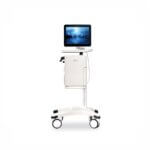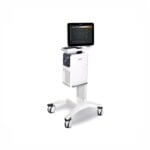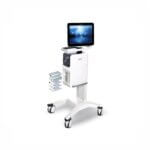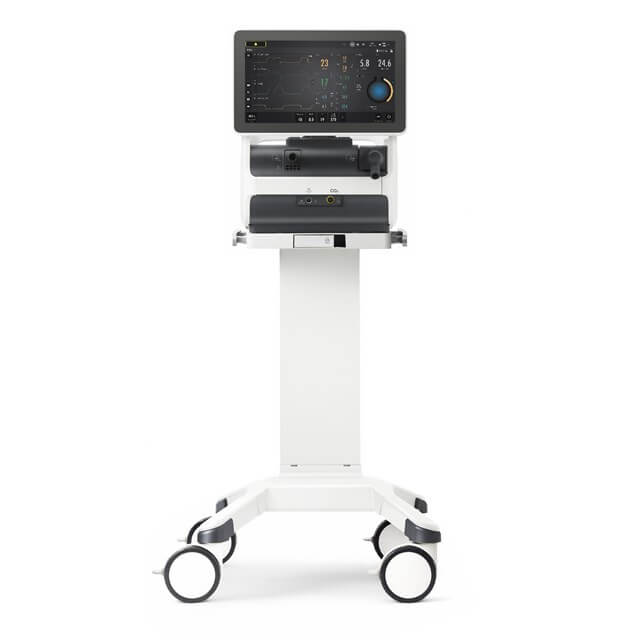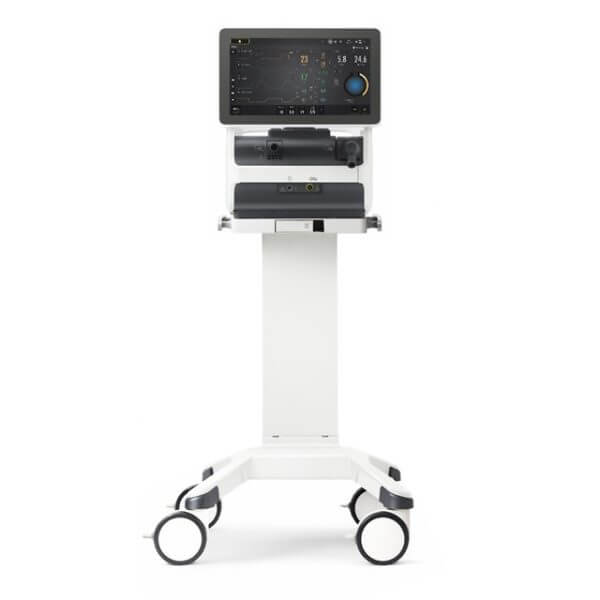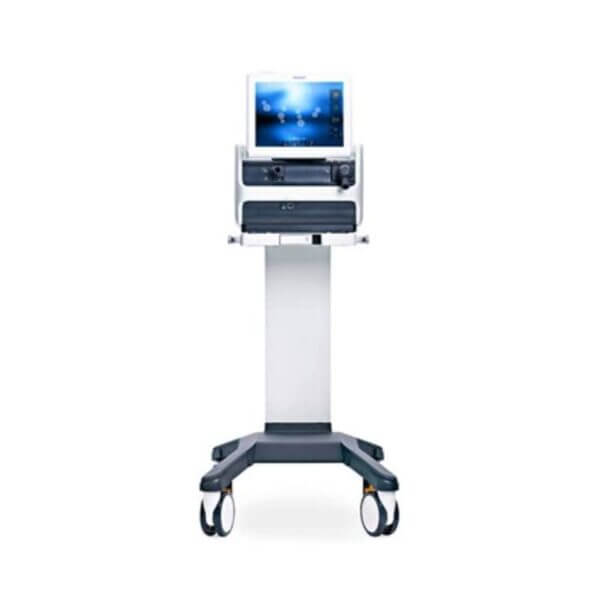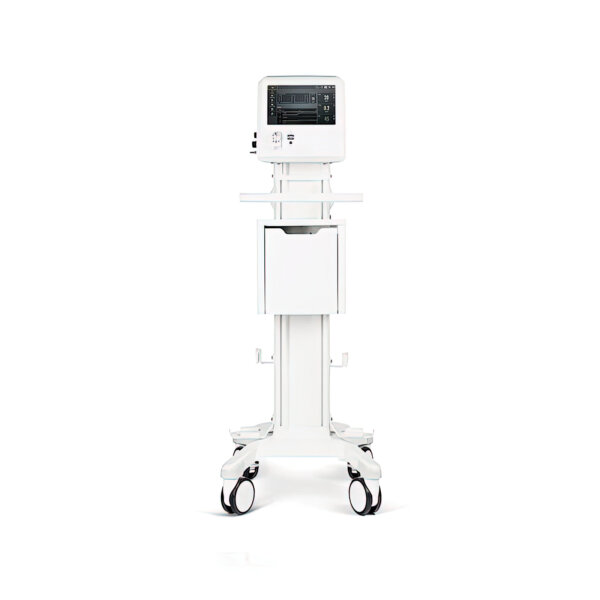Servo-u
The new power of you
Servo-u gives you many options for personalized lung protection and weaning. All are easy to understand, implement and use, making it simple to integrate advanced personalized ventilation strategies into your daily patient care.
Safe and easy to use mechanical ventilation
Servo ventilators build on more than 50 years of close collaboration with intensive care clinicians around the world. The result is clinical innovation, higher levels of patient safety and a superior user experience. Results from a recent study in Critical Care showed that Servo-u outperformed other ventilators on seven out of nine comparisons on use safety, perceived usability and workload.
High use safety: A ventilator with high use safety limits the risk of use errors and close calls. This helps you deliver the intended patient care.
High usability: High usability means that the ventilator is easy to use and learn. The interaction is intuitive and supports the way you work.
Low workload: Low workload means you spend less effort using the ventilator and more time caring for your patient.
Context-based guidance: Servo-u provides informative guidance for everything from pre-use check to initial parameter setting and throughout the entire treatment.
Safety Scale parameters: The system Safety Scale tool makes parameter changes quick and intuitive, while dynamic images illustrate how those changes may affect ventilation.
Alarm management: The frame lights up when an alarm is triggered, and this visual signal is easy to see from any view point. On-screen checklists help you to manage each active alarm and avoid undesired alarms.
Personalized lung protection: How do you avoid ventilator-induced lung injuries due to mechanical ventilation? Particularly for patients with acute lung injury or acute respiratory distress syndrome (ALI/ARDS)? Such situations may require protective strategies tailored to meet the individual situation. This is where we can assist. Our tools for personalized lung protection are all designed to help you continuously assess risk, monitor key variables, expedite intervention and improve patient-ventilator interaction.
Protect the lungs and other organs: Certain patient may require personalized lung protection. Servo ventilators allow you to detect risks early and support with timely and consistent implementation of your personalized ventilation strategies. With a Servo, you can tailor and monitor the ventilation to keep within a lung- and diaphragm-protective range that meets hospital protocol. All to reduce the risk of ventilator induced lung injurie
NEW SERVO COMPASS
Servo Compass visualizes the volume and pressure of each breath in relation to set targets.Servo Compass allows clinicians to visually assess patients at a glance for low tidal volumes and peak pressures, alerting clinicians to changing conditions and allowing them to intervene with appropriate therapy. Servo Compass joins NAVA and Edi monitoring as part of the Servo portfolio focusing on lung protection and activation of the diaphragm. The goal of which is to enable clinicians to promote lung protective ventilation and wean patients from the ventilator
Οpen Lung Tool: Open Lung Tool trends helps you assess lung mechanics and gas exchange – breath-by-breath, in real time and retrospectively. It provides flexibility and guidance when personalizing PEEP and driving pressure during recruitment maneuvers, prone positioning and extracorporeal life support. Stress index, carbon dioxide elimination and transpulmonary pressures are also fully integrated.
Automatic recruitment maneuvers: Auto SRM is an automatic workflow for Stepwise recruitment maneuvers based on the Open Lung approach. The tool guides you smoothly through recruitment, decremental PEEP titration, re-recruitment and post-recruitment personalization of PEEP and driving pressure, based on optimal Cdyn. Diagnostic features include assessment of recruitability and additional decision support when patients do not respond to the recruitment maneuver.
Transpulmonary pressure: Τo simplify esophageal manometry and improve accuracy, we have developed an automatic maneuver to validate balloon positioning and filling. A diagnostic view provides esophageal (Pes) and transpulmonary (PL) pressure waveforms, with key parameters for safety assessment of controlled and spontaneous ventilation. The relationship between airway and transpulmonary pressures is now much more intuitive.
Target protective tidal volumes: PRVC is a true volume-targeted mode that automatically adapts the inspiratory pressure to account for rapid changes in lung mechanics. Separated regulation
of controlled and assisted breaths reduces tidal volume variations and ensures lower driving pressure. A low tidal volume strategy can therefore be maintained
when a patients start breathing spontaneously.
Soothing Heliox therapy: Heliox is our therapy option for patients having difficulty breathing due to airway resistance associated with various types of respiratory disease. Safe, reliable and easy to use, Heliox is a mixture of helium and oxygen that, due to its low density, facilitates laminar flow and minimizes airway pressure. The illustration above shows Heliox therapy promotes better laminar flow with less turbulence in a typical asthma patient.
Personalized weaning: What if a patient’s brain could direct a mechanical ventilator, easing them more quickly off respiratory support? That’s the idea behind one of our key weaning tools that lets you monitor diaphragm activity (Edi) and deliver a personalized level of assistance in the NAVA mode. Together with other tools and therapies like Non-invasive ventilation and High Flow therapy, there are numerous ways to personalize weaning to ease the patient off the ventilator and restore normal breathing
Wean early with an active diaphragm: Recent clinical studies reveal that diaphragm weakness is prevalent (23–84%) in ICU patients and consistently associated with poor outcome. Servo-u lets you monitor the patient‘s diaphragm activity (Edi) to personalize ventilation for successful weaning.
Ease the transition to spontaneous breathing: The interactive Automode eases the transition to spontaneous breathing for patients and staff. It switches seamlessly between controlled and supported modes depending on patient effort. There are three combinations available for Automode:
Diagnose breathing and start weaning : Edi – the vital sign of respiration – is a bedside diagnostic tool that allows you to monitor and safeguard the patients diaphragm activity. Servo-u lets you visualize Edi on screen, making it easier to identify over-assist, over-sedation and asynchrony when optimizing ventilation delivery and assessing weaning readiness. The result: earlier and more informed interventions.
Activate the diaphragm and protect the lungs: NAVA (Neurally Adjusted Ventilatory Assist) uses the Edi to deliver personalized support, invasively and noninvasively. It promotes lung protective spontaneous breathing with higher diaphragmatic efficiency, and fewer periods of over and under-assist. It also improves the patient’s ICU experience, helping you to reduce sedation with improved comfort and sleep quality.
Configurable NIV modes for all patient categories: NIV NAVA is a non-invasive technique useful in helping avoid intubation and preventing respiratory failure from worsening. It is also leakage independent, helping to reduce skin tear. High-flow therapy reduces the patient’s work of breathing through an accurate flow of heated and humidified oxygen, improving comfort and tolerance
Secure investment: Optimizing uptime and efficiency – Ownership with less stress. Servo-u is an investment both for now and for the future. The flexible, modular platform is always ready to adapt to your changing clinical needs, and our expert support is on hand every step of the way.




